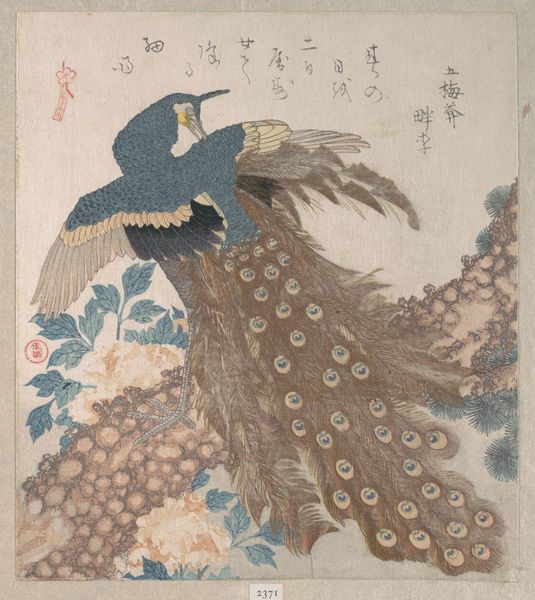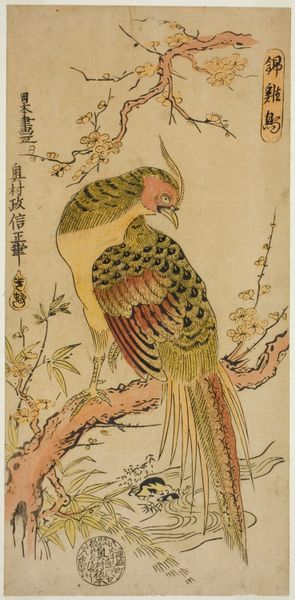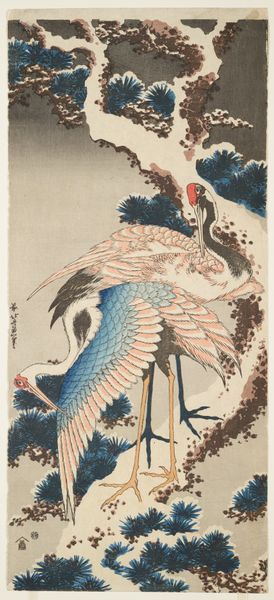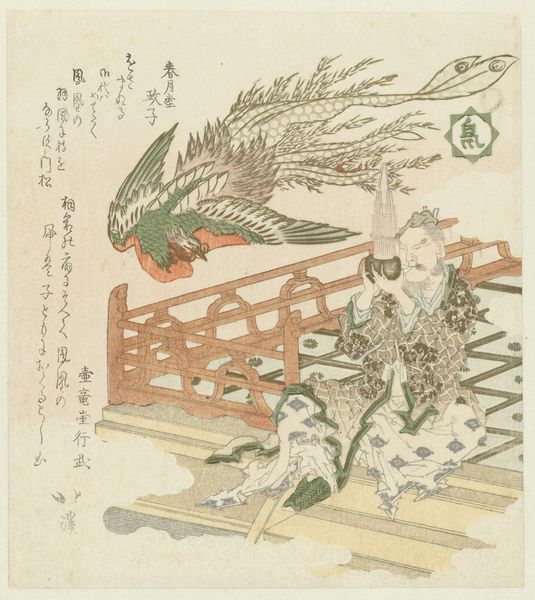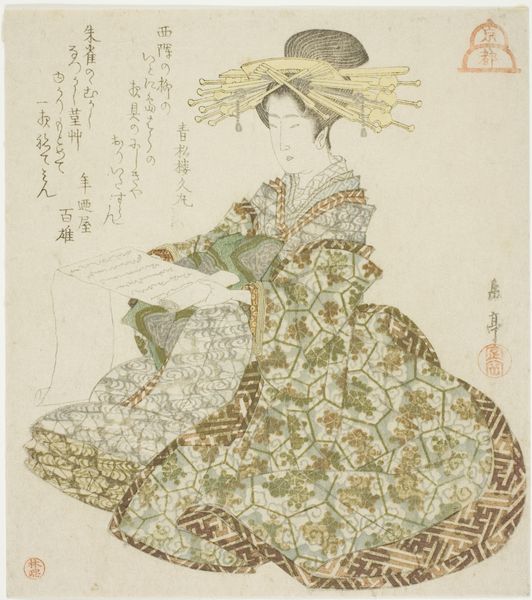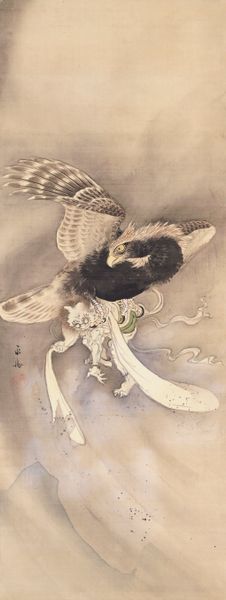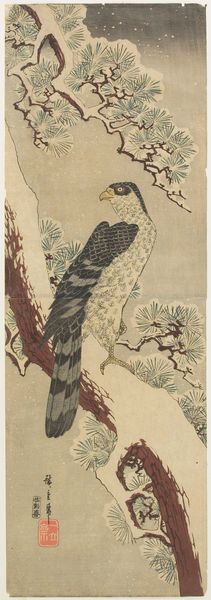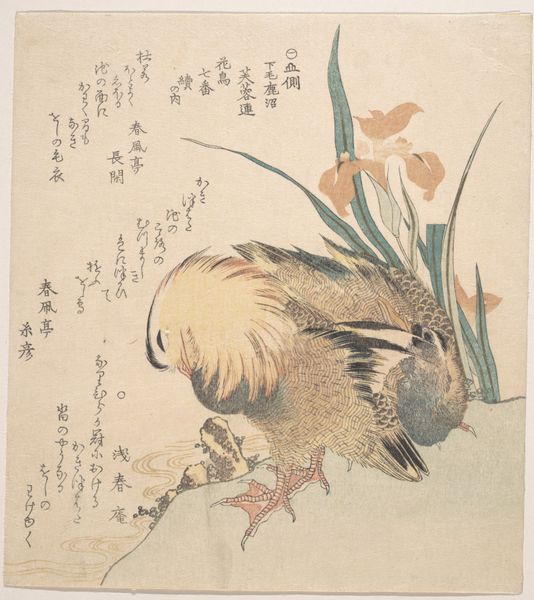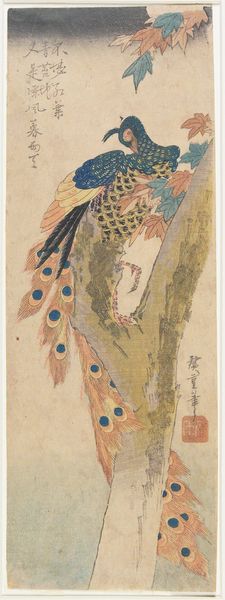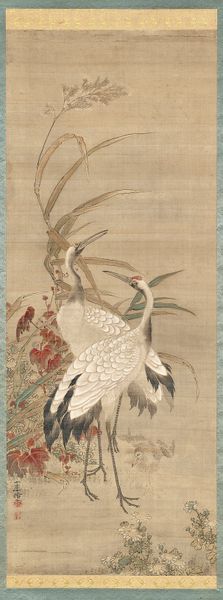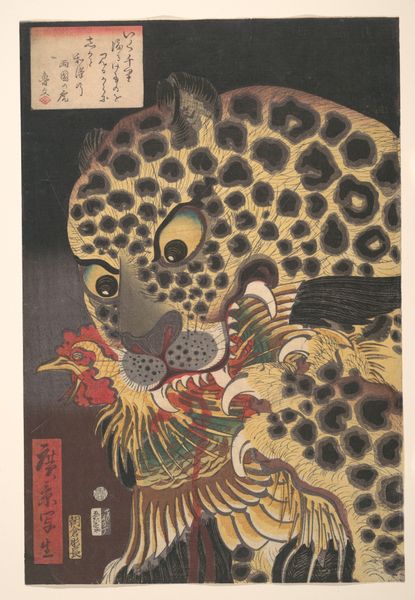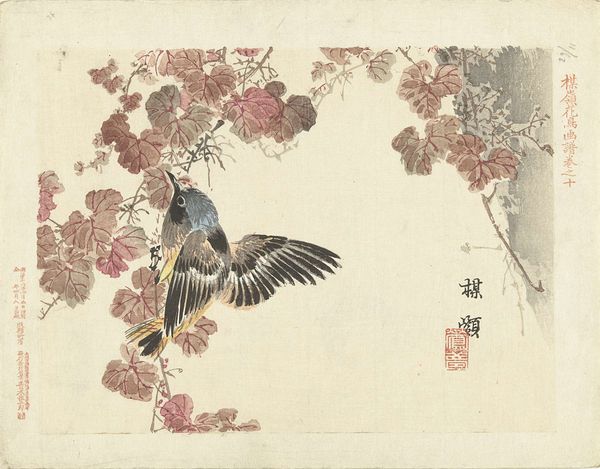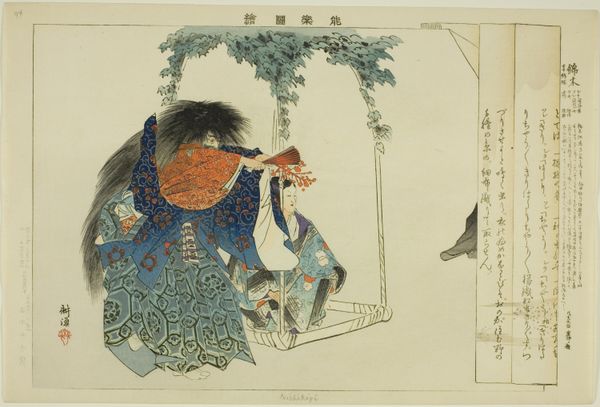
Peacock, Pine Tree, and Peonies, from the series "A Set of Three Petals (San hira no uchi)" c. 1810s
0:00
0:00
print, watercolor, woodblock-print
#
water colours
# print
#
asian-art
#
landscape
#
ukiyo-e
#
watercolor
#
woodblock-print
#
orientalism
#
botanical art
#
watercolor
Dimensions: 20.1 × 17.3 cm
Copyright: Public Domain
Editor: So, this is "Peacock, Pine Tree, and Peonies" by Kubo Shunman, from around the 1810s. It's a woodblock print with watercolor. The texture looks really delicate and the peacock seems almost like it’s emerging from the pine and peonies. What strikes you about it? Curator: I'm immediately drawn to the labor involved. Think of the individual blocks carved for each color in this ukiyo-e print. Consider the workshop system—the artist, the carver, the printer, each a skilled worker. How does that change your perception of the image compared to, say, a painting? Editor: I never really thought about the division of labor... So it's not just Shunman's vision, but a collective effort, almost like a factory but making art? Curator: Precisely! The "factory" produced art that was bought and traded by the merchant classes of Edo-era Japan. Consider the materiality, too. These weren’t precious oils on canvas but wood and paper—relatively accessible materials. How does that accessibility inform the image? Does that affect the themes that emerge? Editor: I guess making it accessible, not just to look at but also to produce, democratizes art in a way. So it’s about bringing art closer to the everyday life and also highlights the social and economic structure in Edo period. It shows that it’s not just for higher classes… Curator: Exactly! Think of the consumption of these images – fleeting, disposable, compared to the traditional art forms that were hoarded by aristocracy. Now consider those peonies and the peacock's tail: is it about luxury or about capturing the moment? Editor: I see. Looking at it from this angle shifts the entire meaning. I was too focused on the image, rather than the processes behind it. Curator: It's about bridging that gap between the visual and the tangible. Editor: It gives me a fresh new pair of eyes for woodblock prints. Thank you so much!
Comments
No comments
Be the first to comment and join the conversation on the ultimate creative platform.
